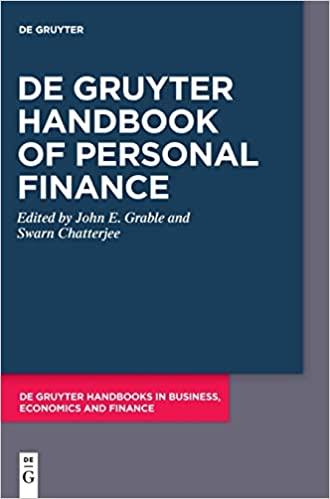Question
B. Gibbs Inc. is an unleveraged firm, and it has constant expected operating earnings (EBIT) of $2 million per year. The firm's tax rate is
B. Gibbs Inc. is an unleveraged firm, and it has constant expected operating earnings (EBIT) of $2 million per year. The firm's tax rate is 40%, and its market value is V = S = $12 million. Management is considering the use of some debt financing. (Debt would be issued and used to buy back stock, so the size of the firm would remain constant.) Because interest expense is tax deductible, the value of the firm would tend to increase as debt is added to the capital structure, but there would be an offset in the form of a rising risk of financial distress. The firm's analysts have estimated, as an approximation, that the present value of any future financial distress costs is $8 million and that the probability of distress would increase with leverage according to the following schedule:
Probability of Value of Debt Financial Distress $2,500,000 0.00% 5,000,000 1.25 7,500,000 2.50 10,000,000 6.25 12,500,000 12.50 15,000,000 31.25 20,000,000 75.00
a. What is the firm's cost of equity and weighted average cost of capital at this time? b. According to the "pure" MM with-tax model, what is the optimal level of debt? c. What is the optimal capital structure when financial distress costs are included? To account for financial distress, calculate the value of the firm for each level of debt and subtract the present value of financial distress multiplied by the probability of financial distress at each debt level. d. Plot the value of the firm, with and without distress costs, as a function of the level of debt.
Step by Step Solution
There are 3 Steps involved in it
Step: 1

Get Instant Access to Expert-Tailored Solutions
See step-by-step solutions with expert insights and AI powered tools for academic success
Step: 2

Step: 3

Ace Your Homework with AI
Get the answers you need in no time with our AI-driven, step-by-step assistance
Get Started


